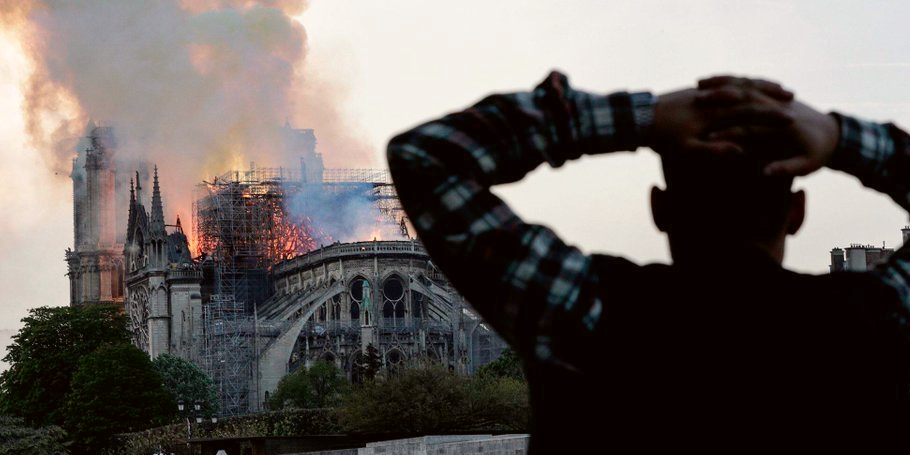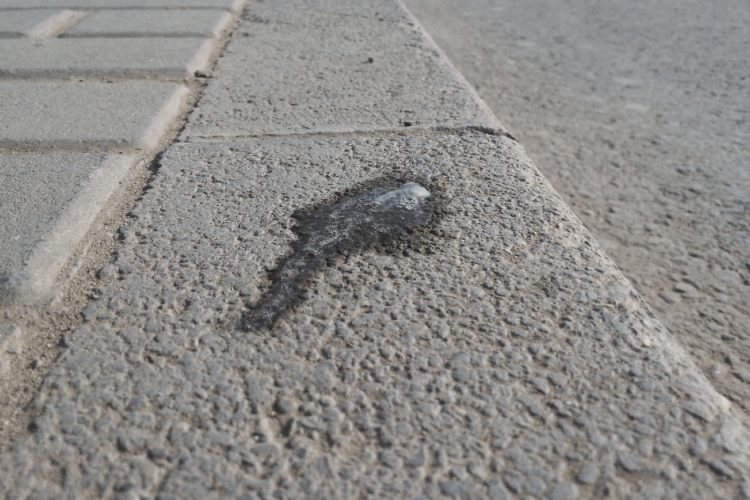Notre Dame Cathedral Blaze Provokes Outpouring of Sympathy From Beijing
Beijingers have taken to social media to express support and solidarity with sister city Paris following a blaze which has destroyed much of the roof of the Notre Dame Cathedral.
The fire, which began at approximately 6.30pm CET on Apr 15, has prompted an outpouring of memories and condolences from Beijingers, seemingly taking to heart the sister city pact, which states: "competition between great cities must not prevent the sharing of their experiences." Paris and Beijing have been sister cities since 1997.

Suggestions of arson regarding the blaze have been ruled out, but the fire may have been started accidentally in relation to renovation works. The fire burned for a full eight hours before being extinguished, with one firefighter severely injured in the process.
While the full extent of the damage has yet to be seen, dramatic images showed the collapse of the cathedral's 19th-century spire. Reports also indicate that the majority of the cathedral's roof, as well as at least one of its iconic stained-glass, rose windows have also been destroyed. While one of the two iconic west-facing facade towers caught fire, it has been saved. The cathedral also contained many priceless relics.
Cathedral de Notre-Dame de Paris, almost 900 years of history
Now over 850 years old, construction of the Notre Dame Cathedral first began in 1160 and was mostly completed by the mid-13th century, although it underwent numerous modifications over the following centuries. The Gothic masterpiece suffered much damage and desecration during the French Revolution, in which it became a makeshift shanty-town, and the statues of biblical kings on the front facade were beheaded.

Considered by many to be the symbolic center of Catholicism in France, it is also cherished among non-Catholics as a monument of great cultural, architectural, and historical value. The cathedral was listed as a UNESCO World Heritage Site since 1991 and is the most visited tourist site in France. With an average 13-plus million visitors passing through the doors – for free – every single year, visitor numbers surpass that of even the Eiffel Tower (7 million on average annually) and Chateau de Versailles (8 million in 2018).
Chinese netizens react
Shortly after news of the fire broke, many Chinese people began sharing photos of themselves visiting the Notre Dame on social media. Wang Rae, a marketing professional who works in Beijing shared a photo of herself outside the Notre Dame in 2014, and said, "It's a must-go place. Every Chinese person knows Notre Dame," adding that, " [Victor] Hugo's Book Notre Dame de Paris is required reading for Chinese students, and Paris epitomizes romanticism for many Chinese people."

Other netizens are sharing their well-wishes and personal stories via the hashtag #巴黎圣母院大火# bālí shèngmǔ yuàn dàhuǒ (Notre Dame fire in Paris).

Stephanie Paul, a licensed tour guide, and a former English teacher based in Tianjin, now conducts historical and cultural tours of Paris. She believes Chinese visitors are drawn to Notre Dame by its undeniable fame. Paul, who had been up late Monday night "doing damage control" to adjust her tour schedule on account of the fire, added that Chinese visitors that she encounters professionally are generally attracted to the beautiful visuals of the cathedral.
"While [Chinese] don't necessarily have the understanding of iconography and the importance of Christian tradition, [they] appreciate the grandeur, and the colossal size of the cathedral ... What is so visual about Notre Dame is the light, shining through it with this play on shadow and darkness ... they can appreciate the mystical feel of the church."
Furthermore, Paul believes that some of the attraction lies in the unique perspective that can be gained from climbing Notre Dame's two towers. "After the Eiffel Tower and Tour Montparnasse, [the towers] are the tallest things in the city, and they were always designed to be this opportunity to reach to the heavens. Something that Chinese tourists do appreciate – they have pagodas – is that the higher you get, the closer to God you get. In a time of industrialization, for Chinese tourists to climb up the towers to see a panoramic view of Paris, a relatively flat city, is also quite incredible."
Chinese visitors to Paris, a love story coming to an end?
Despite the public demonstrations of solidarity and sympathy, Chinese visitor numbers to Paris have actually been in decline in recent months. Jean-François Martins, adjunct Mayor of Paris and responsible for Sport and Tourism, visited Beijing just five days ago (Apr 11) during a three-city tour of China in order to meet with industry professionals to discuss strategies to bolster visitor numbers to Paris.
The decline in numbers has in part been blamed upon the gilet-jaune (yellow vest) protests that have paralyzed the capital and cities all over France since November of last year. Paris' image as a peaceful, top tourism destination has also been severely damaged in recent years following a number of national security incidents, most notably the Bataclan terrorist attacks of 2015.

Despite a dip in numbers, the impact of Chinese visitors to Paris is undeniable. Chinese tourists represent the single largest proportion of visitors to France, the vast majority of whom arrive via Paris airports, and the country itself has been the most-visited in the world for the past 20 years. Yet Chinese tourism in France is largely defined as rushed, mega-bus whistle-stop visits to major tourist sites, punctuated by meal breaks in Chinese restaurants. Travelers on group package tours typically visit iconic spots such as the Eiffel Tower, the Notre Dame Cathedral, and the Chateau de Versailles, and have scheduled shopping sprees in luxury department stores such as Galeries Lafayette and Printemps. However, this trend has begun to change in recent years, with increasingly savvy millennial visitors traveling solo, or in smaller family groups, and seeking experiences away from the crowds.
The impact of Chinese visitors may have penetrated even further into the fabric of French society. Prior to 2014, only guides conférenciers, the official accreditation of French tour guides such as Paul, who had undergone years of grueling study, were permitted to lead tourist groups through national monuments. The controversial deregulation to the law in 2014 was attributed by some to pressure from Chinese tourist lobby groups who were in turn frustrated at the lack of Mandarin-speaking guides available to meet their demands.
While netizens and members of the public the world over are already calling to raise funds in order to restore the ancient monument, assessing exactly how much damage has been wrought is a task that may take months to establish. Only time will tell if the incineration of one of Paris' most famous monuments will further damage tourist numbers or reignite their interest.
READ: Jingshan Park's Imperial Temple Reopens to the Public Following a Four-Year Renovation
More stories by this author here.
Email: annahartley@thebeijinger.com
Twitter: @its_annahartley
Instagram: @its_annahartley
Images: erkansaka.net, Alliance Française Melbourne (via Instagram), Weibo, Wikimedia, Reuters







